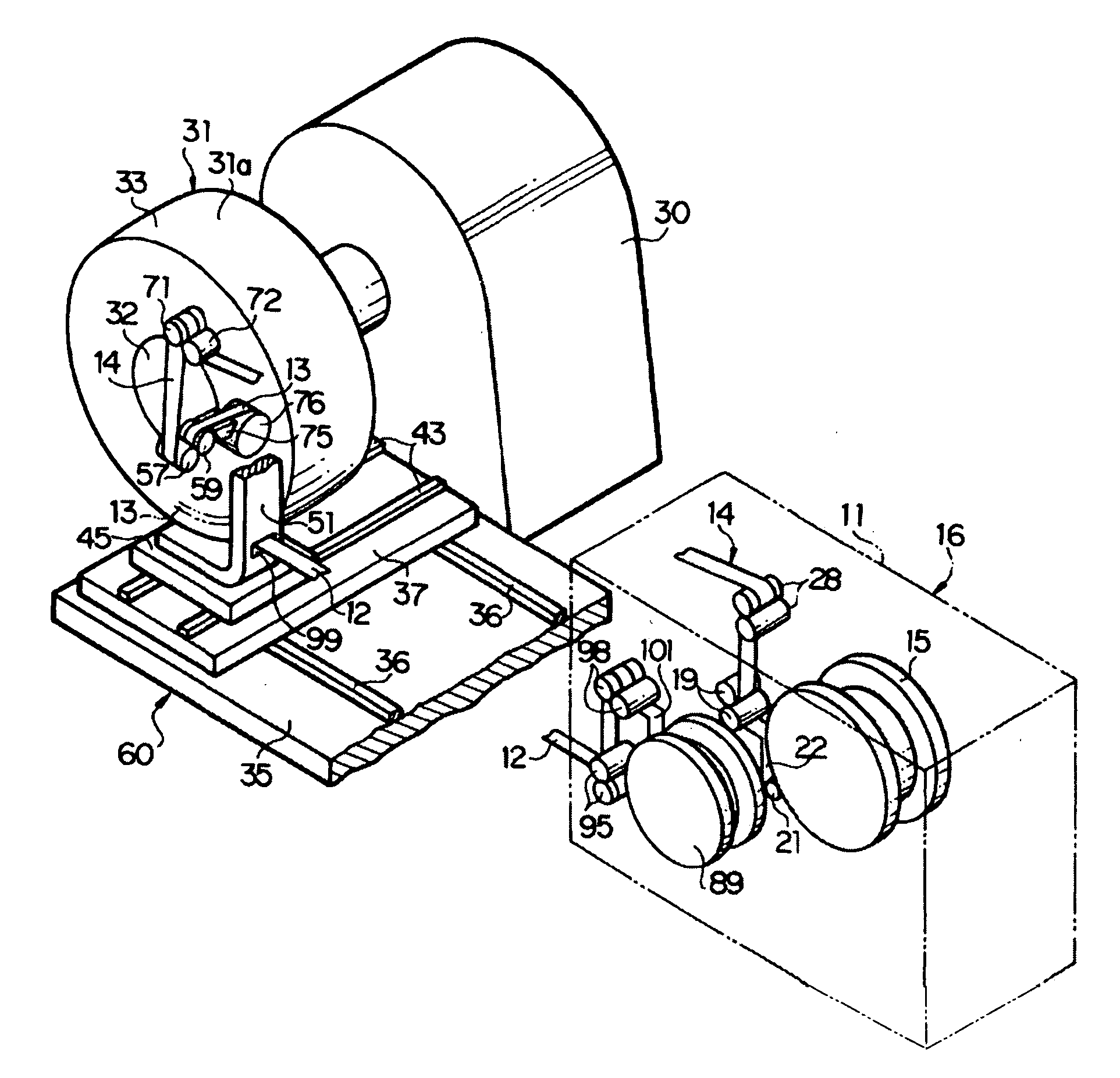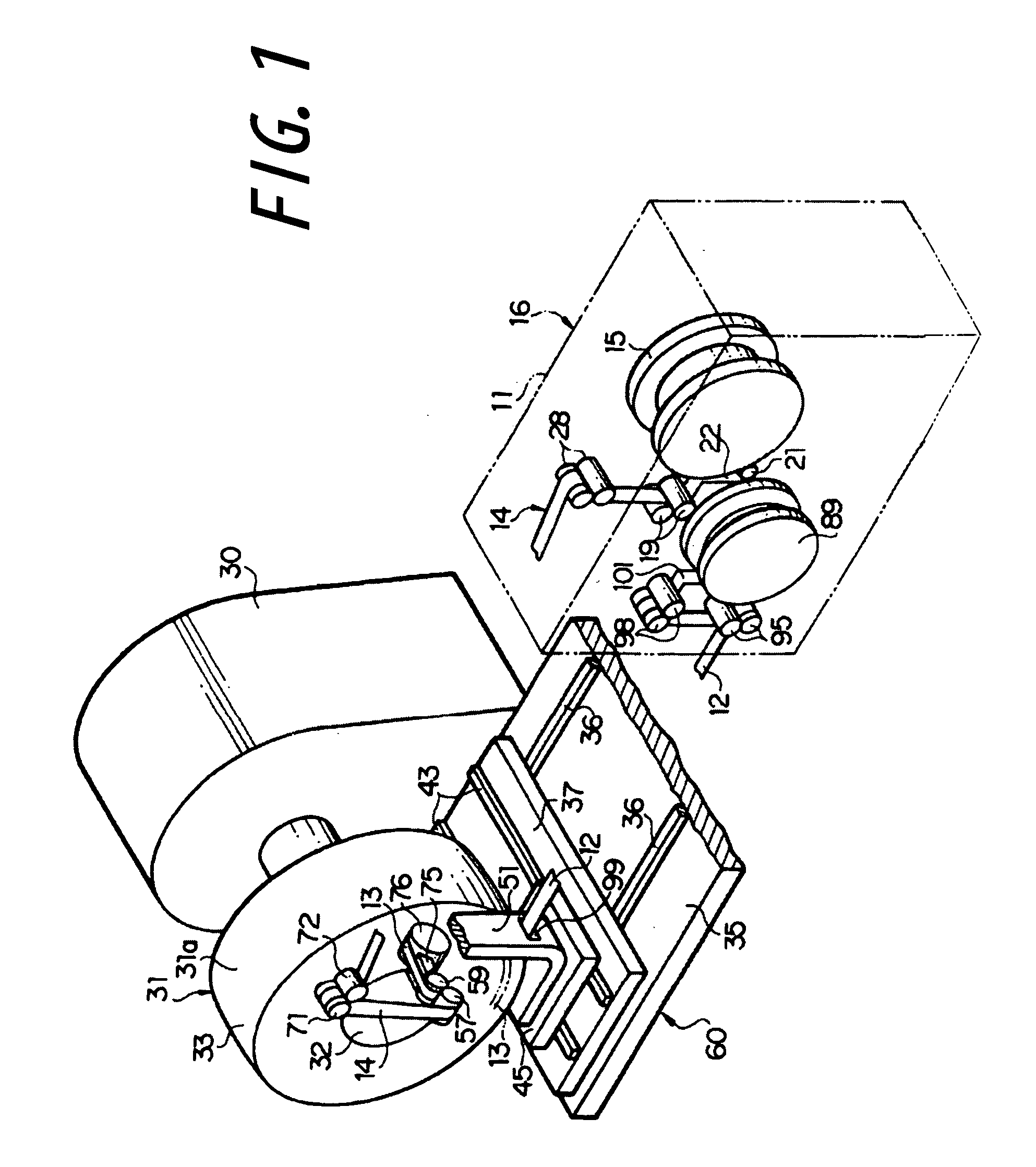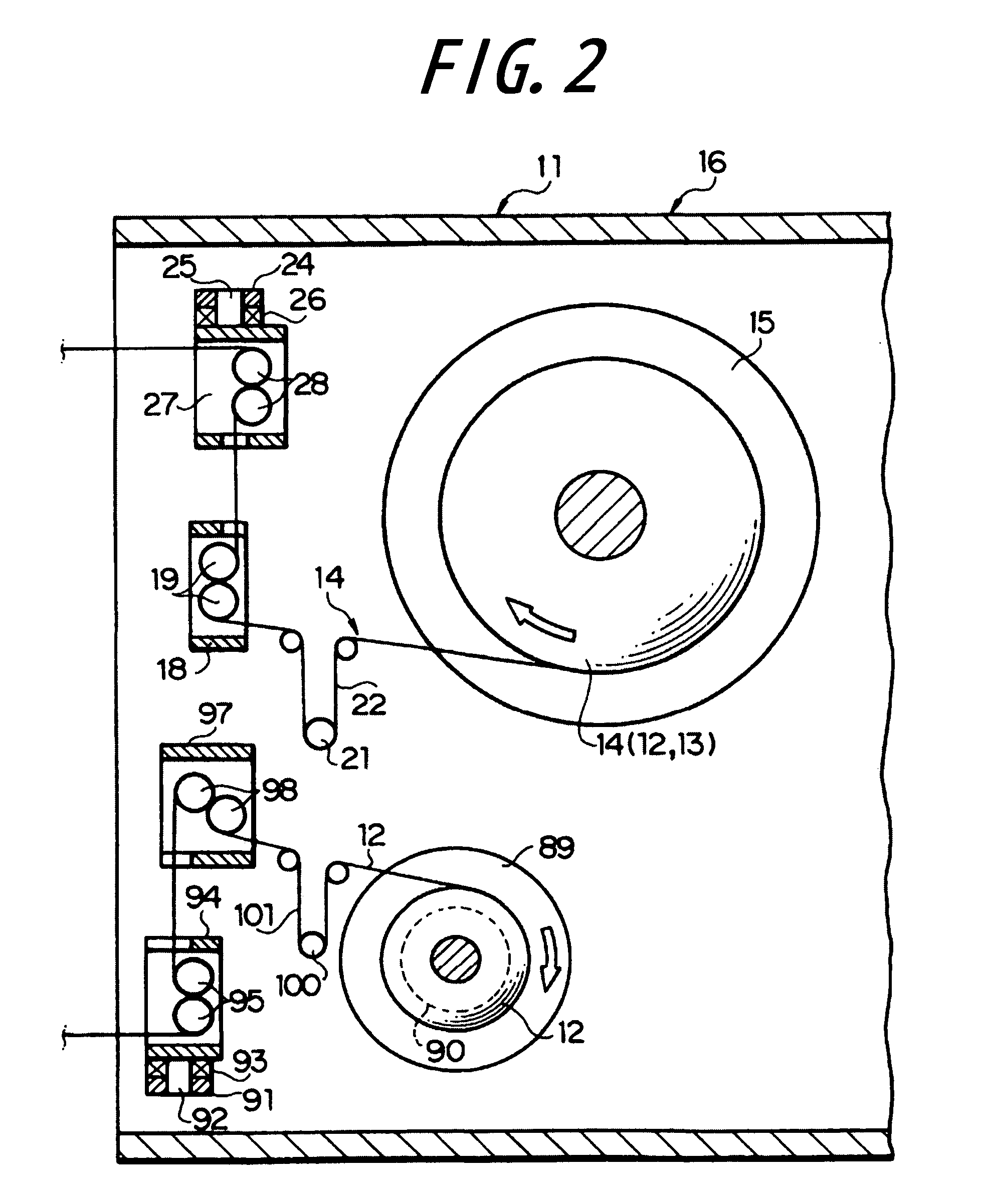Method and apparatus for manufacturing unvulcanized tires
- Summary
- Abstract
- Description
- Claims
- Application Information
AI Technical Summary
Benefits of technology
Problems solved by technology
Method used
Image
Examples
first embodiment
A first embodiment of the present invention will be described below with reference to FIGS. 1 to 4, wherein reference numeral 11 denotes a stationary frame fixedly installed on a floor surface. The stationary frame 11 serves to rotatably support a reel 15, on which a narrow strip member 14 (FIG. 6) comprised of a narrow liner 12 and a narrow ribbon-like body 13 laid over the outer surface side of the liner 12 is wound multiple times. Here, the liner 12 is made of a plastic film, such as a polyethylene film, and the ribbon-like body 13 comprises an unvulcanized rubber. Thus, the liner 12 and the ribbon-like body 13 are wound on the reel 15 as being superimposed with, and adhered to each other under a weak adhesion force.
The reel 15 is normally applied with a slight braking torque. Thus, when the narrow strip member 14 is applied with a predetermined tension and the reel 15 is thereby applied with a resultant torque that exceeds the braking torque, the narrow strip member 14 comprised...
second embodiment
A second embodiment of the present invention is shown in FIG. 7, which is essentially same as the first embodiment described above, except that the rotational axis of the application roller 105 is arranged on a vertical plane (axial plane) that includes the rotational axis of the support body 31, and the rotational axis of the first guide roller 106 is arranged on a plane that is parallel to this vertical plane. Thus, the application roller 105, the first guide roller 106, the second guide roller 107, etc., are moved by the moving means two-dimensionally in these vertical planes, and driven into a parallel movement in the meridian direction along the outer surface 31a of the support member 31. To this end, it is necessary for the moving means to be able move the first guide roller 106, etc., at least on the left-to-right direction and vertical directions. Also, it is usually necessary for the moving means to be able to move the first guide roller 106, etc., in the fore-and-aft direc...
third embodiment
A third embodiment of the present invention is shown in FIG. 8. In the third embodiment, the rotational axis of the application roller 110 is arranged on a horizontal plane (axial plane) that includes the rotational axis of the support member 31, and the rotational axis of the first guide roller 111 is arranged in a plane that is parallel to this horizontal plane, as in the first embodiment. However, the second guide roller 112 is arranged on a straight line perpendicular to the rotational axis of the first guide roller 111, on the side of the first guide roller 111 remote from the support member 31, so that the rotational axis of the second guide roller 112 extends normally in the vertical direction.
With such an arrangement of the third embodiment, the application roller 110 and the first and second guide rollers 111, 112 are moved by the moving means two-dimensionally along the horizontal plane so that these rollers achieve a parallel movement in the meridian direction along the o...
PUM
| Property | Measurement | Unit |
|---|---|---|
| Thickness | aaaaa | aaaaa |
| Tension | aaaaa | aaaaa |
Abstract
Description
Claims
Application Information
 Login to View More
Login to View More - R&D
- Intellectual Property
- Life Sciences
- Materials
- Tech Scout
- Unparalleled Data Quality
- Higher Quality Content
- 60% Fewer Hallucinations
Browse by: Latest US Patents, China's latest patents, Technical Efficacy Thesaurus, Application Domain, Technology Topic, Popular Technical Reports.
© 2025 PatSnap. All rights reserved.Legal|Privacy policy|Modern Slavery Act Transparency Statement|Sitemap|About US| Contact US: help@patsnap.com



